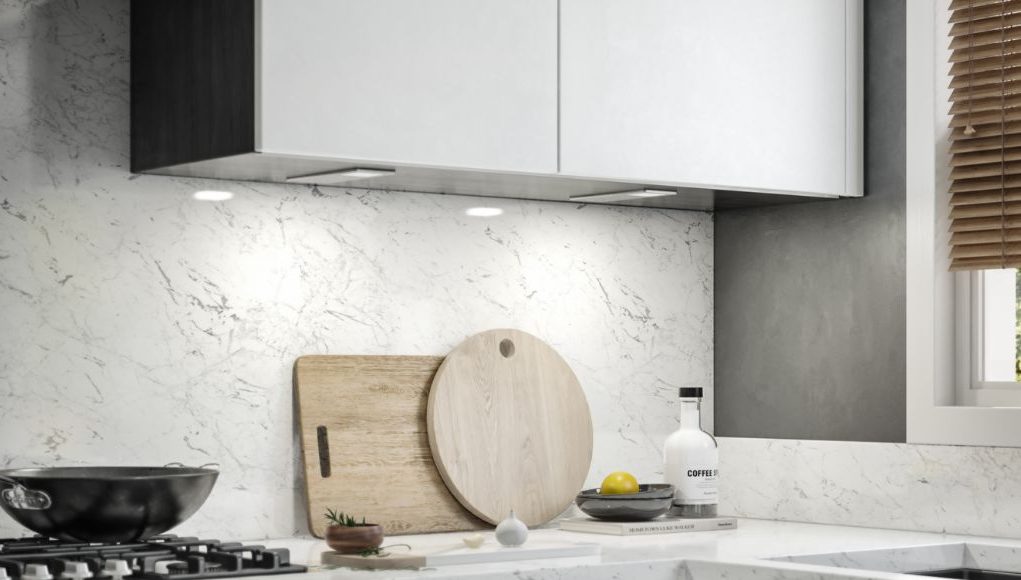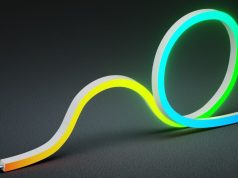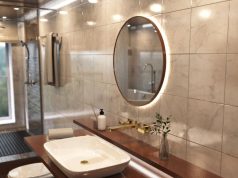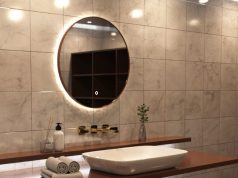Do you need to include under-cabinet fixtures in your lighting design? What do they do, and how do you benefit from them? Under-cabinet lighting can serve as task and ambient lighting. Depending on the fixture’s colour temperature, it can elevate the warmth and cosiness of the room or boost its functionality and efficiency!
Specific parameters must be considered when deciding the brightness level of under-cabinet lights. What are they, and how bright should under-cabinet lighting be?
Understanding Brightness: Lumens vs Watts
When it comes to understanding the brightness of a light fixture, it’s essential to differentiate between two terms: lumens and watts. Lumens measure the light produced, while watts measure the power consumed.
Conventional lighting fixtures produce as much light as the power they consume. The higher the wattage, the higher the lumens. That’s why, for the longest time, brightness was determined through watts.
With the introduction of LED lighting, the traditional understanding of brightness through wattage became inaccurate. LEDs are incredibly efficient, converting most of the electricity they consume into light. This means that even with a relatively low wattage, they can still produce a remarkable amount of luminance.
It’s normal for an LED fixture to have a low wattage. Check the lumen count to get an idea of how bright the fixture is!
Factors Influencing the Ideal Brightness for Under Cabinet Lighting
As mentioned above, several factors will influence the brightness of your under-cabinet lights. What are they?
Purpose of Lighting
The first thing you must determine is the purpose of the under-cabinet lights. Will you use them as task lighting or general lighting? For task lighting, you need 200 to 500 lumens per foot. If you want to use them as the primary source of illumination in the room, they should be 500 to 1000 lumens per foot.
To achieve more versatility, choose a dimmable, colour-tunable under-cabinet fitting that allows you to switch between task and ambient lighting.
Size and Layout of the Kitchen
Naturally, if you have a massive kitchen with a complicated layout, you’ll need a brighter under-cabinet light to compensate for the area and eliminate possible shadows. Alternatively, an extremely brilliant under-cabinet light may bring more discomfort to a small kitchen.
Surface Reflectivity
Your countertops, backsplash, and appliances can also affect the brightness of your under-cabinet light. Some materials absorb light, while others bounce it around. Do in-depth research about the materials you have or will use to identify your under-cabinet lighting requirement more accurately.
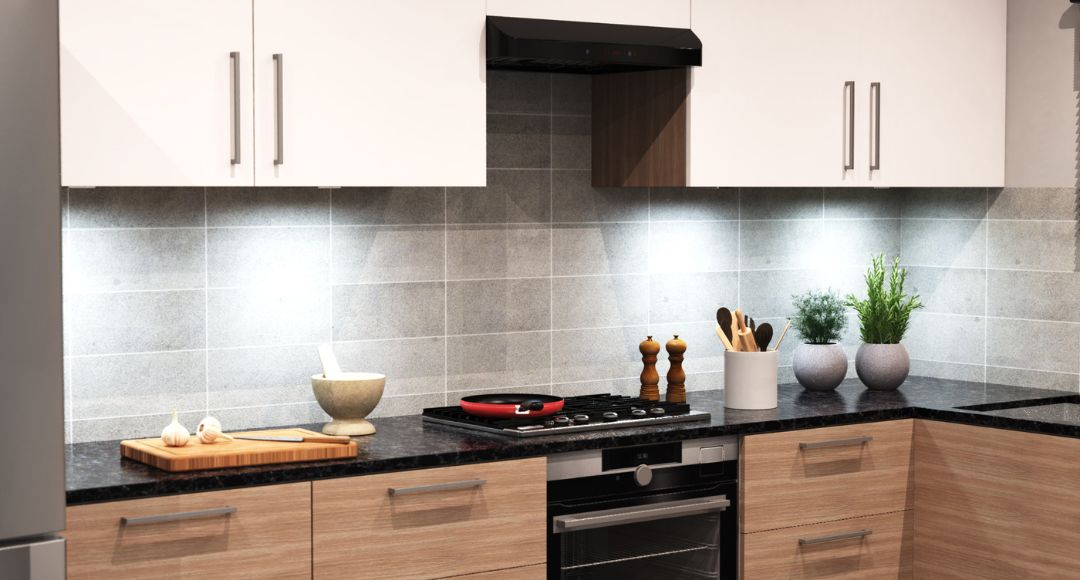
Recommended Brightness Levels for Under Cabinet Lighting
Here’s a simple guide to give you a general idea of the brightness level you should aim for! If you plan to use the under-cabinet lights to illuminate countertops and use the space for food preparation and cooking, you need at least 200 to about 500 lumens per foot.
On the other hand, if you plan to rely on cabinet lights as one of the primary general lighting throughout the kitchen, you should aim for 500 to about 1000 lumens per foot. Say the under-cabinet lights are meant for accent and mood lighting. If so, you only need 80 to 200 lumens per foot.
Types of Under Cabinet Lighting and Their Brightness
You can find several variations of under cabinet lights. What should you get based on the brightness that you need?
LED Strip Lights
It comes in many assortments and customisation options. Because of their versatility and ease of application, LED strip lights are one of the go-to under-cabinet lighting fixtures for both rentals and owned residences!
With LED strip lights, you have full reign over your lighting design. You can get models with a variety of device compatibility and those with unique features that will bring your vision to life! So, if you prefer more control options, choose an LED strip light for your under-cabinet lighting.
Puck Lights
Puck lights come in different shapes, sizes, finishes, brightness levels, dimming abilities, colour temperatures, and more. Although they are not as flexible as strip lights, puck lights can still give you the look you want!
If an LED strip light’s strength is in its versatility, customisation, and ease of application, puck lights have focused brightness! This is perfect for task lighting because puck lights provide direct illumination over spaces where you work. You can enjoy clarity and comfort and ensure that you are performing your tasks in a safe environment!
Linear Bar Lights
Linear bar lights are a hybrid of strip and puck lights. You can buy them individually in a specific length, but you can also connect them to create a continuous linear glow!
Typical models of LED strip lights have individual LED chips.
While you can purchase an LED profile to hide the dotted effect or use a COB strip light to get an evenly distributed light, using a linear bar light is another alternative that you can consider. It will provide you with a uniform and steady light distribution, as well as different control options and customisations.
Conclusion
When determining the brightness of your LED under-cabinet lights, remember to identify their purpose, consider the size of the space, and study the room’s surface. Then, you can select whether a strip light, puck light or linear bar light will enable you to achieve the lighting design you want!
If you don’t know where to get premium-grade LED under-cabinet lights, visit our website, Simple Lighting! We have an extensive collection of under-cabinet lighting and other indoor, outdoor, and commercial lighting fixtures!


